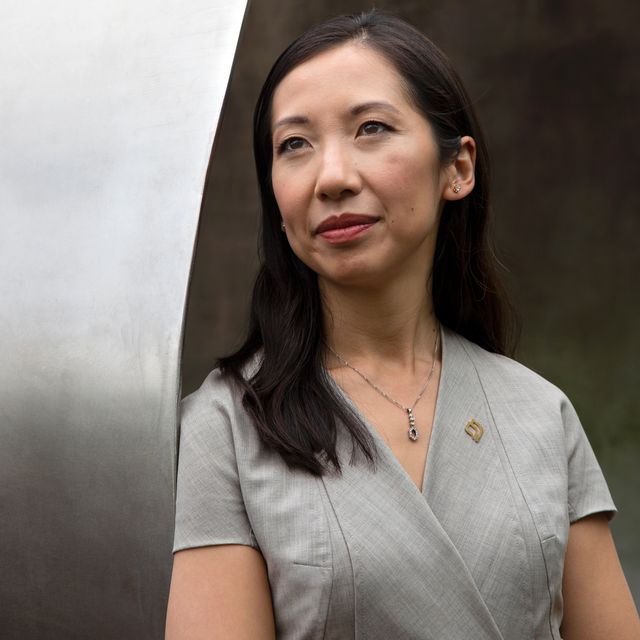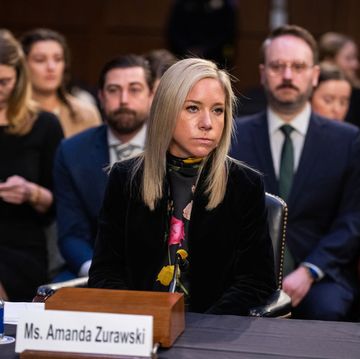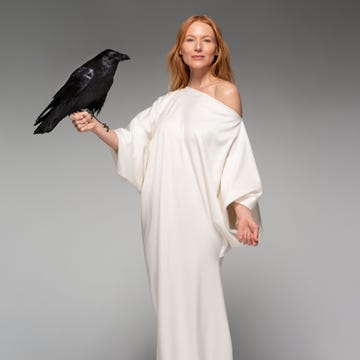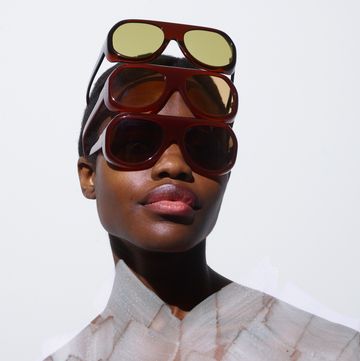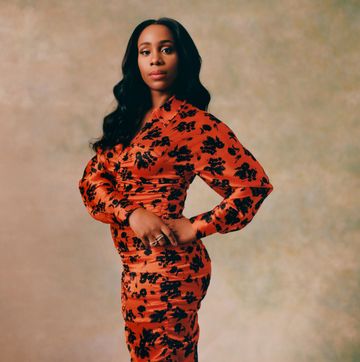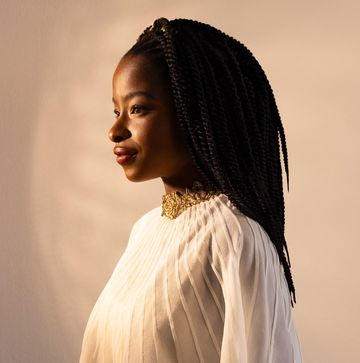By the time she was 18, Dr. Leana Wen hadn’t just completed high school—she’d already graduated from college, summa cum laude, in biochemistry and was on her way to medical school. Now, at just 35, she’s poised to enter the national stage as the president of Planned Parenthood, the lightning-rod position vacated by Cecile Richards this past April. Wen’s appointment marks the first time in nearly half a century that an MD has helmed the nonprofit. As an emergency-room physician, she treated victims of the Boston Marathon bombing. She is still in practice today, having specialized in emergency medicine for its core value of “treating everyone with dignity, compassion, and respect, whether that be a senator or a homeless person.” Like Richards, Wen has proven herself a worthy advocate for policy change. During her nearly four-year tenure as the health commissioner of the city of Baltimore, Wen instated a blanket prescription for the lifesaving opioid antidote naloxone. And after the Trump administration cut funding for teen-pregnancy prevention programs, Wen’s office partook in a lawsuit against them—and won.
ELLE spoke with the doctor on September 27, just hours after the Christine Blasey Ford–Brett Kavanaugh hearing. It had been a trying day for the nation, women especially. Kavanaugh’s subsequent confirmation as a Supreme Court justice makes Wen’s position perhaps as fraught as it’s been since the organization’s founding 102 years ago: She’s certain his vote will work toward reversing Roe v. Wade. But Wen, who immigrated with her parents from Shanghai to the U.S. just before her eighth birthday, is up for the challenge.
ELLE: You’ve described your life as a “typical immigrant narrative”— how so?
Leana Wen: We came to this country with $40. My parents worked long hours, multiple jobs. My mom cleaned hotel rooms and worked at a video store. My father delivered newspapers and washed dishes in a restaurant. We barely made ends meet, and sometimes didn’t make ends meet and were evicted. I knew I wanted to be a doctor, but didn’t know how I could actually do it.
Why a doctor?
I was very ill as a child, even as a baby. I suffered from asthma. I remember early on trying to catch my breath, and just how terrifying it was, this feeling of suffocation. When I was somewhere between eight and nine years old, we lived in an apartment building, and a neighbor’s child was having an asthma attack. I remember vividly his grandmother calling for help, and I ran to them. I tried to use my inhaler on him; nothing was working. I kept asking, “Can we call the ambulance?” She refused to, and he died.
In front of you?
In front of me. The reason she didn’t want to call was that they were all illegal immigrants. She was terrified of what might happen. I also saw another neighbor who couldn’t afford her medication; she kept cutting her pills into halves and quarters. She ended up going on dialysis and eventually died, too. I remember thinking, What is this world where I’m being treated and someone else is dying? In my own neighborhood? I wanted to be there for individuals who otherwise had nowhere else to go.
You found your calling so young. At 13, you enrolled in the Early Entrance program at California State University, Los Angeles.
I entered college, in part, because I wanted to help my parents with their financial circumstances. But when anyone asked me, “What do you want to do? What is your career goal?,” I never told them that I wanted to be a doctor, because it sounded so crazy. I mean, who in my situation was a doctor? I didn’t know any, other than my pediatrician. But I knew someone who was a lab tech. It was a job I understood, so in college I went to different labs and said, “I want to be a lab tech.” I am really fortunate that I met incredible mentors early on. One mentor in particular, Dr. Raymond Garcia, said, “If you want to be a lab tech, that’s great; I will help you. But what do you really want to do?” I told him I wanted to be a doctor, but that there was no way I could do it. He said, “No. If that is what you want, I will show you how to get there.” I had never had anyone say that to me. That was just a life-changing moment. I am 100 percent sure I would not be where I am now if it weren’t for people showing me that I could do something that was beyond my wildest dreams.
Was it hard to connect with other students? You were just a kid then.
I didn’t have friends, but I don’t think it was related to my age. I had a severe speech impediment. I was what they call a “covert stutterer.” I got very good at avoiding words and certain circumstances— if I couldn’t say “pencil,” I’d say, “something to write with,” or if I couldn’t say my name, I’d find a way to leave the room until introductions were done, and then come back. I had acquaintances—people I was friendly with, people I studied with—but I never let anyone get close to me, because I couldn’t admit to them my greatest source of shame, which was my stuttering.
You haven’t stuttered once.
I was 22 or 23, in medical school, when I finally sought treatment. That was the first time in my life I opened up and let others see who I really am. For many years, I didn’t have a voice. I wasn’t comfortable with who I was. The first time I went to the speech therapist, I told her, “Look, give me all the exercises; I’ll do anything you want me to do. I’m really good at working. The one thing I can’t do is admit that I am a person who stutters.” It took me years to recognize that as a core part of my identity: I am an Asian woman; I guess I am an old millennial? I am an immigrant, I am a doctor, but I am also a person who stutters. I have patients coming to me now who have their own sources of fear and shame and stigma, and it drives me so much more.
Do you remember the first time you went into a Planned Parenthood?
When we came to this country, my parents and I didn’t have health insurance. My mother couldn’t get health care anywhere else, so she went to Planned Parenthood, and I remember her telling me about it. I always saw Planned Parenthood as the place that gave her refuge when nobody else would. Then, when I was a teenager, I remember walking into one by myself, because I wanted information in a judgment-free setting.
Today, of all days, with the fate of the Supreme Court hanging in the balance, Roe v. Wade is on a lot of people’s minds. What actions, if any, have you seen change people’s opinions from one side of the debate to the other?
There is a real danger when one part of health care is singled out: It is stigmatized and attacked. That is what is happening to abortion care, reproductive care, and women’s health care. There are things being done to women’s health care that we would never consider doing to anything else. Doctors and nurses are being forced, by the federal government, to not give patients access to information they are requesting. Imagine if this were anything else; imagine if this were diabetes, and the federal government told doctors and nurses that, even if patients wanted to get access to insulin, they couldn’t even talk about insulin. It’s not some random principles that we’re fighting for. It’s literally about patients’ lives, women’s lives. The health of women is about the health of families, and communities, and the economic future of women—all these intersections. And the health of our most vulnerable: LGBTQ, immigrants. Focusing on that intersectionality is critical to us as a movement.
But is there one message that you’ve seen really move the needle?
I’ve been reflecting a lot on my own reproductive health journey. We all have one. One in four women in America will have an abortion in her lifetime—I haven’t, but I’ve been a woman who took a pregnancy test and wished more than anything that it would be negative, because I wasn’t ready to become a mother. I wanted to finish college, go to medical school, fulfill my dreams, and achieve my parents’ dreams. But I’ve also been a woman who took pregnancy test after pregnancy test wishing more than anything that it was positive because my husband and I desperately wanted a child. We need to be a society that enables and empowers women to make the best decisions for themselves. And I think that’s the message that will resonate. That first, it is about the fundamental right to health care, and second, it’s about society trusting women.
You have a new job and you’re a new mom—your son, Eli, is a year old now. Are you getting any sleep?
Eli is a great baby. He’s been sleeping through the night since he was eight weeks old, just as I was returning to work. I got very lucky.
How has he motivated your professional drive?
I found out I was pregnant in December of 2016, and my entire pregnancy coincided with the attempt to repeal the Affordable Care Act and gut Medicaid. I thought, What kind of world am I bringing my son into? Now I see attacks on immigrants, and family separation. And the public-charge rule that’s making it harder for immigrants to obtain basic things we need to survive, that my family was fortunate enough to benefit from. Eli had a lot to do with why I’m taking on this huge obligation. I think a lot about the world I want for him, and it’s one where everyone has access to health care—it’s not a privilege available to some, but a right that is available to all. It’s also one where we trust women. It’s to fight for Eli that I’m here. We’re at a time in our history where everything is at stake, and we can’t be waiting for other people to step up for us. The cavalry isn’t coming. We’re the ones we’ve been waiting for.
8K people visit Planned Parenthood every day.
~75% of Planned Parenthood patients are at or below 150% of the federal poverty level.
1.5M+ young people receive sex ed from Planned Parenthood each year.
~400K unintended pregnancies are prevented in a single year by Planned Parenthood’s contraceptive services.
$0 of government funding is spent on abortion services, except in rare cases involving rape or incest, or if the mother’s life is in danger.
These statistics were provided by Planned Parenthood based on data from 2017 and 2018.
